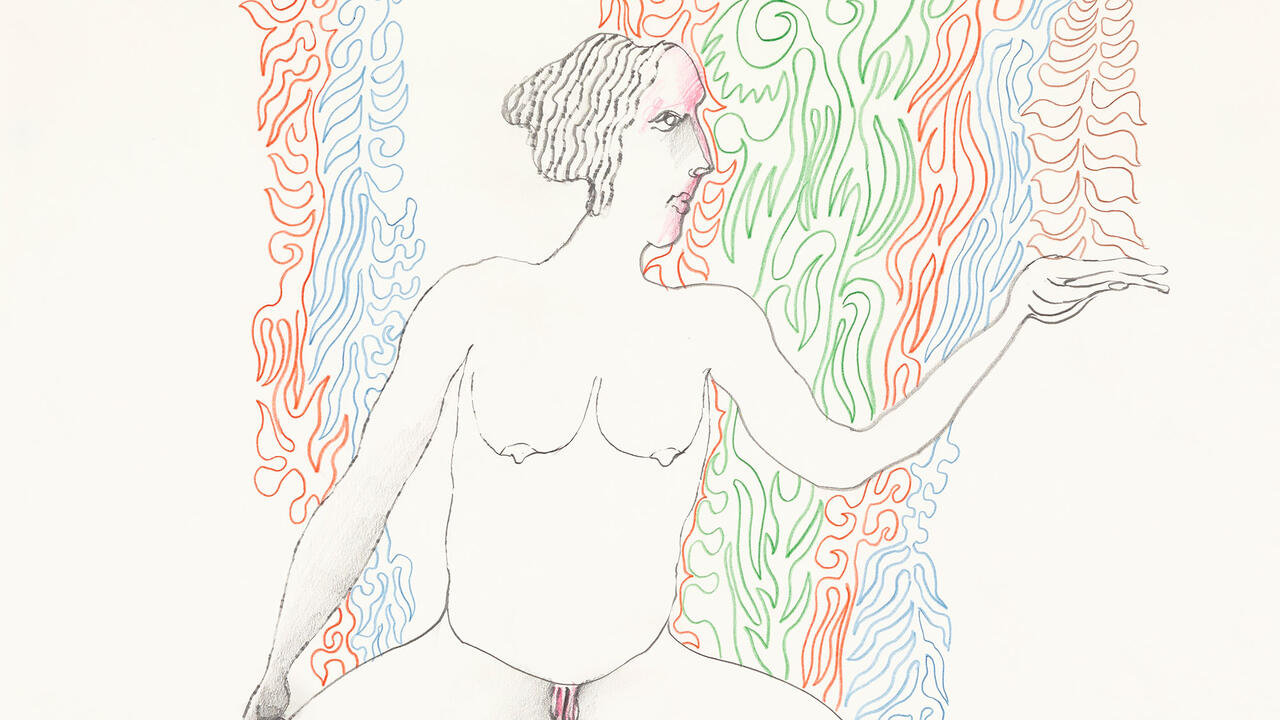‘Precarious Joys’ Speaks in Declaratives
At its most moving, the 2024 Toronto Biennial of Art asserts that expressions of joy in precarious times are no small feat
At its most moving, the 2024 Toronto Biennial of Art asserts that expressions of joy in precarious times are no small feat

In the mid-1960s, Chilean-born artist Cecilia Vicuña began combining salvaged materials into delicate bricolages she called ‘Precarios’, some of which she ceded to the tides. ‘The history of art written in the North includes nothing of the South,’ she mused in her 1983 book Precario/Precarious. Formerly positioned at that canon’s margins, Vicuña’s poetic reckoning with the precarity of ecosystems and communities in the face of colonialism and extractivism informed the third edition of the Toronto Biennial of Art (TBA), which devotes an entire wall to these sculptures. Curated by Dominique Fontaine and Miguel A. López, ‘Precarious Joys’ assembles work by 36 exhibiting artists and collectives, many of whom are Indigenous, diasporic and/or citizens of the Global South.

Spanning 11 venues – including, in acknowledgement of biennial tourism, an airport and a train station – the show revolves around six baggy themes that emerged from conversations with the artists: ‘coded’, ‘home’, ‘joy’, ‘polyphony’, ‘precarious’ and ‘solace’. In cross-section, these manifest as meditations on self-determination, traditional knowledge and kinship under precarious conditions or from precarious positions. Recent biennials – past editions of TBA among them – have modelled a variety of responses to the quandary of how one might decolonize an exhibition format that was seeded in nation-building world’s fairs and flourished with the rise of neoliberalism. Here, the decolonial ethos of the work on view chimes with the abatement (if not quite eschewal) of a ‘top-down’ curatorial approach, extending to the accompanying catalogue’s inclusion of a roundtable with 13 biennial staff members.

Rendered in phantasmagorical detail on bark cloth, tributes to Amazonian plant medicine by Uitoto leader Santiago Yahuarcani, such as Curación con ajo sacha a Shanticito (Shanticito Being Healed with Wild Garlic, 2020), are among the show’s most arresting paintings. This year’s Venice Biennale features the artist’s work alongside that of his son, Rember Yahuarcani; ‘Precarious Joys’ contains an installation of woven masks by his wife, Nereyda López (El lugar de los espíritus [The Place of the Spirits, 2019–24]). Cultural inheritance – the legacies that artists, particularly those from communities experiencing cultural-assimilation pressures, elect to take forward – runs like a red thread through the show, from Elina Waage Mikalsen’s I Lay My Ear Against the Weave’s Ear (2019–ongoing), experimental musical instruments made from her grandmother’s Sámi weaving implements, to Stina Baudin’s Internal Algorithms (Listen to your ancestors, they have all the answers) (2023), a woven sculpture whose designs evoke inkjet printer banding and QR codes. Recalling Audrey Bennett and Ron Eglash’s 2020 essay ‘On Cultural Cyborgs’ – which discusses ‘heritage algorithms’, the ‘computational activities’ found in practices ranging from Navajo weaving to Latinx drumming – Baudin’s ‘coded’ textiles repudiate colonial frameworks around what constitutes technology.

At its most moving, the biennial underscores that expressions of joy are no small thing; they can be potent acts of resistance to powers that seek to oppress or erase. Leila Zelli’s Pourquoi devrais-je m’arrêter? (Why Should I Stop?, 2020–21) pairs a montage of social-media clips of Iranian women practising varzesh-e bāstāni (a traditional martial art) with a video of the artist pacing around a makeshift zurkhaneh (gymnasium). Given that women are often prohibited from performing the sport publicly in Iran, their exuberant presence in online public space blazes particularly bright. Resistance likewise takes an embodied form in Ahmed Umar’s Truth Bears No Scandal (لـواضِح مو فـاضِح ) (2024): three mesmerizing music videos, starring the artist, which draw out the queer love coded into haqeeba (Sudanese vocal music). Umar fled their native Sudan, where homosexuality is criminalized, in 2008; their archival project asserts that queer people have always existed and will continue to do so. Vicuña may have written that her ‘Precarios’ ‘speak in prayer’, but the works of ‘Precarious Joys’ also speak in declaratives.
The 2024 Toronto Biennial, ‘Precarious Joys’, is on view until 1 December
Main image: Santiago Yahuarcani, Curación con ajo sacha a Shanticito (Shanticito Being Healed with Wild Garlic), 2020; Sesión de tabaco (Tobacco Smoking Session), 2022; Examen de bancos en la cueva del saber (Examination by the Pipe-Smoking Shamans at the Knowledge Cave), 2021. Toronto Biennial of Art, 2024, exhibition view. Courtesy: Toronto Biennial of Art; photograph: Toni Hafkenscheid

























